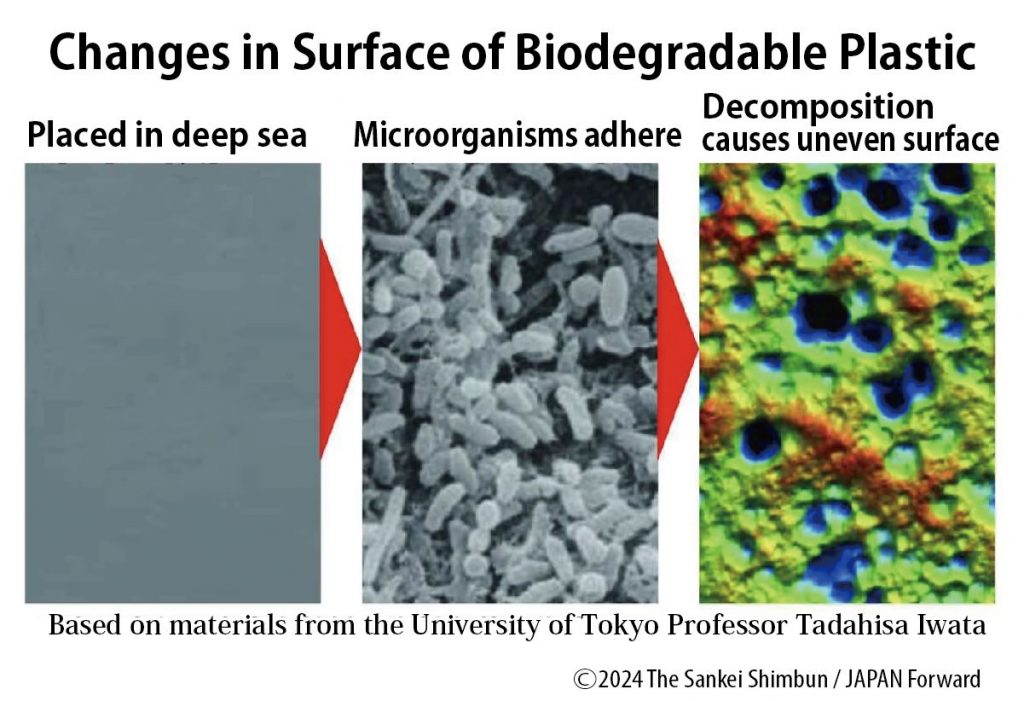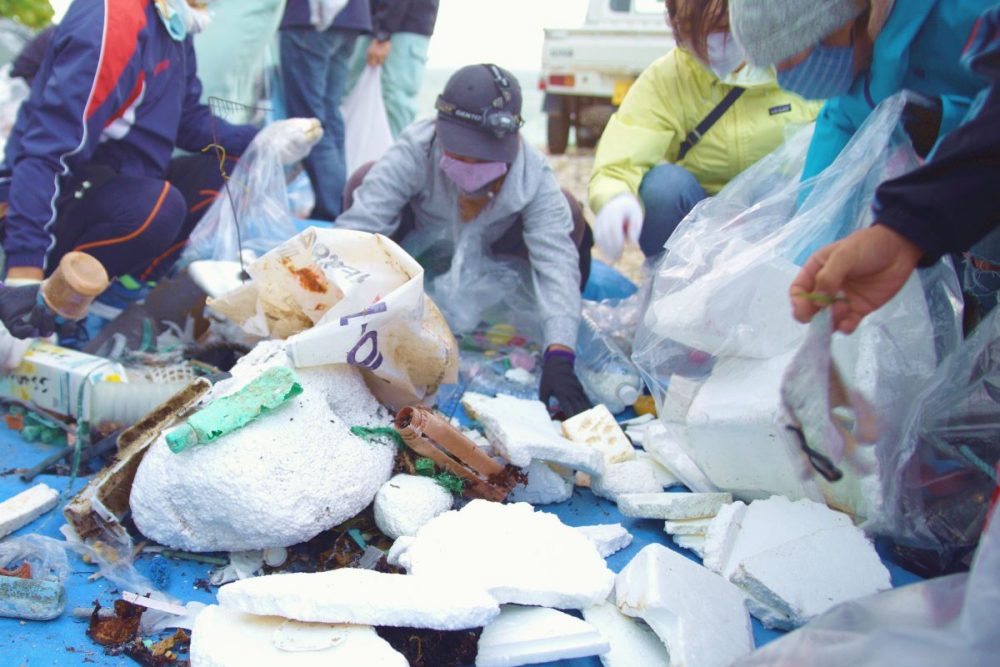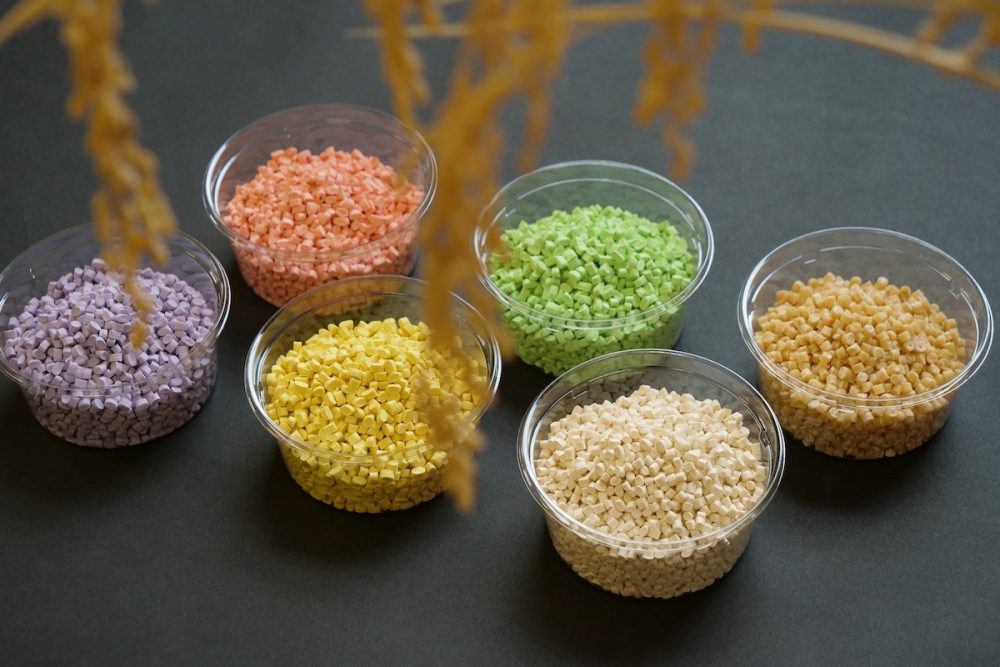Biodegradable Plastics: A Proven Solution to the Problem of Marine Plastic Waste
A research team has confirmed the decomposition of biodegradable plastics in harsh deep-sea environments amid calls to address harmful marine plastic waste.

このページを 日本語 で読む
Biodegradable plastics are receiving increasing attention. Conventional plastic, used for the parts, packaging, and containers of various products, is known to end up in the sea only to never decompose. There, it causes adverse effects on the environment. This has sparked the rising importance of transitioning to biodegradable plastics that can be broken down by microorganisms.
However, concerns remain. The deep sea, where marine plastic waste ends up, is a harsh low-temperature environment with little nutrients. Does this mean that the microorganisms essential for decomposition may be very scarce? What is the reality? A team including researchers from the University of Tokyo is working to confirm the real situation for plastics in the deep sea.
How Plastics Flow into the Ocean
Plastic production for use in products in all industries is reported to be approximately 400 million tons worldwide each year. Reports also show that every year, about 8 million tons are thrown away and end up in the ocean. The great majority are plastics synthesized from petroleum that microorganisms cannot break down.

The main routes by which plastics flow into the ocean are somewhat understood. For example, plastic shopping bags, food containers, and bottles used by consumers generate massive amounts of waste. Some remain outdoors due to littering or inadequate collection and eventually end up in rivers and flow into the sea.
As these plastics drift in the ocean, UV radiation and waves break them into microplastics, or pieces smaller than 5 millimeters. They gradually sink and eventually reach the deep ocean floor. Some microplastics are small enough to be invisible to the naked eye. But they retain their plastic properties and do not chemically decompose.
Transitioning to Biodegradable Plastics
The harm caused by marine plastic waste, including injury to organisms that inadvertently ingest it, has been widely reported. Toxic additives and absorbed toxins accumulate in the edible parts of fish and shellfish. These impacts endanger our food supply when such seafood ends up on our tables.
Recently, strong calls for a transition to biodegradable plastics are on the rise. Biodegradable plastics can be completely broken down by microbial activity, even into CO2 and water. They could greatly reduce the burden on the environment.

But will switching to biodegradable plastic work? The final destination of marine plastic waste is the deep sea. With an absence of sunlight, water temperatures between 2 to 4 degrees Celsius, and very few nutrients, it is a harsh environment for biological activity. Some have argued that the minimal presence of microorganisms means biodegradable plastics may not decompose.
Testing with Shinkai 6500
Until recently, no one had confirmed the existence of microorganisms in the deep sea that can decompose plastic. A team of researchers from the University of Tokyo, the Japan Agency for Marine-Earth Science and Technology (JAMSTEC), and the National Institute of Advanced Industrial Science and Technology (AIST) embarked on a mission to verify the situation.
Using the Shinkai 6500 crewed submersible research vessel and the uncrewed Edokko-1 deep-sea exploration vehicle, the team placed samples of several types of biodegradable plastics at five different deep-sea locations with varying depths and environments. These included off Hatsushima Island in Shizuoka Prefecture (at a depth of 855 meters), the Myojin Seamount near the Ogasawara Islands (1,292 meters), and off Minamitorishima, an island at the easternmost point of Japan (5,552 meters).

The samples were retrieved between 3 to 14 months later. Upon examination, except polylactic acid (PLA) plastic, which decomposes only in high-temperature and high-humidity environments, the plastic samples had all undergone changes. Numerous microorganisms had densely adhered to the surfaces of common biodegradable plastics. Countless irregularities had formed on their surfaces, indicating that decomposition was progressing.
Two Months for a Plastic Bag to Decompose
The rate of decomposition at 1,000 meters depth was approximately one-fifth to one-tenth that of shallow coastal waters teeming with microorganisms. In the deep sea at 5,000 meters, the rate slowed to about one-twentieth.
Other environmental factors are also at play. These include increased water pressure and decreased water temperature with depth, as well as a reduction in the quantity and diversity of microorganisms.
According to the team's calculations, a biodegradable plastic shopping bag will decompose in approximately 3 weeks to 2 months off Hatsushima at a depth of 855 meters.

The team also analyzed the DNA of the microorganisms adhered to the samples' surfaces. They confirmed six types of microorganisms that possess enzyme-producing genes capable of decomposing biodegradable plastics.
This discovery marks the first time these microorganisms' ability to break down plastic has been confirmed. Also, they are known to exist in seabed sediments worldwide. Accordingly, the team concluded that biodegradable plastics would be decomposed in deep-sea environments around the world.
The team's findings demonstrate that biodegradable plastics are decomposed by microorganisms even at marine plastic waste's final destination – the deep seabed.
Professor Tadahisa Iwata of the University of Tokyo explained. "To mitigate future marine plastic pollution, we must use biodegradable plastics in products where leakage into the marine environment is unavoidable," he said.
このページを 日本語 で読む











